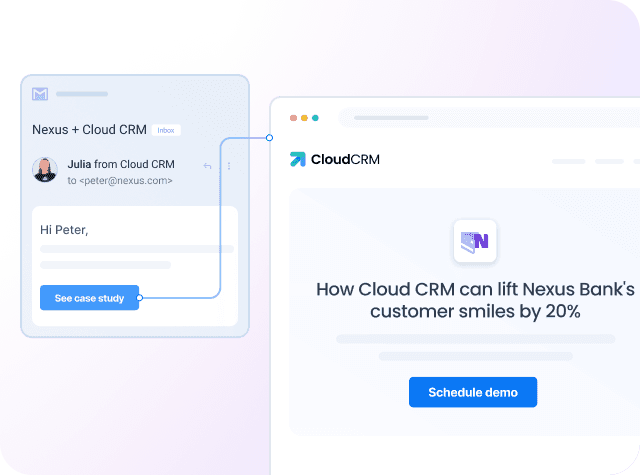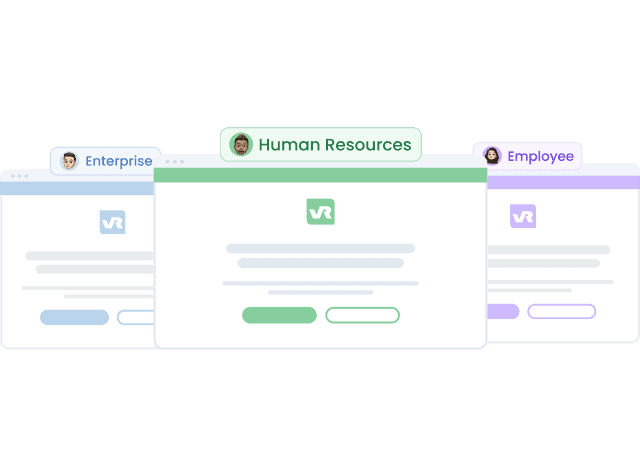Why you shouldn't use Clearbit, 6sense, or Demandbase for B2B SaaS website personalization
If you work as a marketer in a B2B SaaS company and are focused on lead generation for the sales team, you have probably already heard about Clearbit, 6sense, and Demandbase.
These tools are designed primarily for B2B and account-based marketing (ABM). The core goals of these platforms are to:
- Identify high-intent prospects browsing the website by using predictive analytics and intent data so the marketing team can understand which accounts are most likely to convert and plan their marketing campaigns to target them
- Enrich lead data by pulling in detailed firmographic, demographic, and technographic data so the sales team can have a clearer picture of the businesses and decision-makers they are talking to
In other words, these platforms enable more tailored marketing and sales strategies by identifying key accounts and delivering insights based on company data, industry trends, and user behavior.
By providing real-time data on target accounts, these tools allow both teams to collaborate more effectively and target prospects at the right time in the buying journey.
Learn how to implement targeted communication on this channel and convert high-value users.

Alternatives to Clearbit, 6sense, and Demandbase
While Clearbit, 6sense, and Demandbase are leaders in the ABM and B2B space, there are several other platforms that offer similar capabilities:
- ZoomInfo
- HubSpot ABM
- RB2B
- Lusha
- Leadfeeder
- Apollo.io
These platforms share the goal of identifying and prioritizing high-value accounts based on firmographic, behavioral, and intent data, making them powerful tools for ABM and B2B marketing teams.
Why they're not good for B2B SaaS website personalization
While tools like Clearbit, 6sense, and Demandbase are great for data enrichment and ABM strategies, they often fall short when it comes to real-time B2B SaaS website personalization.
They focus on firmographics, not behavior
These platforms specialize in pulling in firmographic and technographic data (e.g., company size, industry) and using that data to segment audiences. While this is useful for sales, it doesn’t offer the flexibility to create personalized user experiences based on individual onsite behavior.
They can't identify 100% of your traffic
This number can vary, but marketers agree that no tool can identify 100% of visitors. Some say they can identify around 50% of the traffic, while others say 30%.
They don't offer real-time data
Their APIs are not optimized to provide data in real time and usually have high latency. This limits their ability to create personalized real-time experiences while visitors are browsing your website.
They're n designed for individual user personalization
These tools are built for B2B personalization at the account level. If you're targeting individual B2B personas, these platforms may not provide the granularity needed to customize their journey based on their unique preferences. We all know an analyst has different priorities than a director, right? Without mentioning the difference between teams.
They heavily rely on third-party data
A key challenge with these tools is their reliance on third-party data. In an era where privacy concerns are top of mind (thanks to regulations like GDPR and CCPA), this can pose compliance challenges. Additionally, the data might not always be accurate or up-to-date, leading to irrelevant or misplaced personalization efforts.
What you need for B2B SaaS website personalization
If you want to change your website's content in real-time while the user is browsing it, to increase the odds of conversion, there are some things you need to consider.
First of all, we must demystify the hard truth that you need to know exactly who that person is, where they work, what their role is, their company's industry, etc. You don't need all of that. This kind of information is important for sales, for sure, but not for website personalization purposes.
Let's say you have a website targeting different industries – financial services, retail, and education – and your product has different value propositions depending on the person's role – one for the operation team (analysts) and one for the leadership (managers and directors).
If so, your content marketing team has probably produced some content addressing their contexts and individual pain. And you're probably using this content to drive traffic to the website.
If I am a user who entered the website through a specific education-target ad and then browsed the website to reach a specific blog post or page showing how the product helps me with my leadership challenges, you can already infer that I'm probably a manager or director from an education company.
With the right tool, you could collect and process these signals in real time to dynamically adapt the website content without relying on third-party data. Instead, you should use a privacy-first approach that relies only on clean, accurate, reliable first-party data.
Using behavioral data helps not only with the usual segmentation but also allows you to go deeper and segment based on the user's interests. Are they interested in a specific feature? What about the plans we offer? Are they browsing top-of-funnel content or searching for bottom-of-funnel information?
Alternatives for B2B SaaS website personalization
One option here would be creating your own stack by gluing together a real-time data processing pipeline with a customer data platform (CDP), a personalization engine, and a content management system (CMS). Oh, and if you want to run AB tests to validate the right message for each persona, an AB testing tool.
That would easily take 6 to 8 months to integrate, not to mention all the costs with 5 different contracts and many hours of development to make it happen.
That's when Croct comes in.
For real-time website personalization, Croct offers a more flexible and effective solution, particularly for companies looking to deliver dynamic, behavior-based user experiences. Here's why Croct stands out:
-
Real-time personalization
Unlike Clearbit, 6sense, and Demandbase's static, data-driven approach, Croct offers real-time personalization. It allows businesses to tailor user experiences based on individual visitor actions, preferences, and behaviors as they happen. This can include everything from dynamically changing CTAs to adjusting content or form fields based on user interactions.
-
Behavioral targeting
Croct enables behavior-based segmentation, which is crucial for personalizing the user journey. Whether a visitor is browsing for the first time, looking at specific features, or hesitating at sign-up, Croct can trigger personalized content based on these behaviors. This ensures that every user receives a relevant experience, increasing engagement and conversion rates.
-
First-party data
Croct focuses on using anonymous first-party data from your own website. This reduces privacy concerns and ensures more accurate personalization, as it is based on your users’ actual behavior on your site, rather than on third-party data that may be outdated or irrelevant.
-
Developer-friendly experience
Croct is designed with developers in mind. It offers an easy-to-integrate, flexible API that allows teams to customize the platform to their exact needs. This gives companies control over how they personalize user experiences, making it ideal for startups and SaaS companies looking to tailor their product experience in creative ways.
-
Analytics and experimentation
Croct also includes personalization analytics and Bayesian AB testing, enabling teams to measure the impact of personalized experiences and continuously optimize them. This data-driven approach to testing ensures that businesses can refine their personalization strategies over time to drive better results.
Why having 3 platforms for content management, AB testing, and personalization when you can have a single one?

While tools like Clearbit, 6sense, and Demandbase are excellent for B2B lead generation, data enrichment, and ABM strategies, they lack the real-time, dynamic personalization capabilities that many businesses need to create tailored website experiences.
For those looking to go beyond static segmentation and create personalized user journeys in real time to increase conversion rates, Croct offers a more flexible, real-time solution. Create your forever-free account today and see it for yourself. You can get up and running in just a few hours.